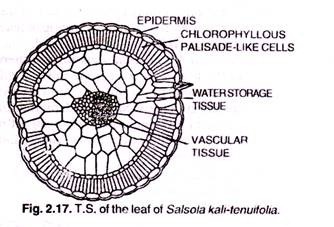Some of the major types of cells are as follows: 1. Bacterial Cells 2. Fungi Cell.
Bacterial Cells:
Bacteria, blue-green algae, mycoplasma are PPLO (Pleuro Pneumonia like Organisms).
These hypeotuls multiply more rapidly are smaller than the eukaryotic cells. An example of bacterial type of cell is prokaryotic cell.
All Prokaryotes have a cell wall surrounding the cell membrane. The fluid matrix filling the cell is the cytoplasm. The genomic DNA many bacteria have small circular DNA outside the genomic DNA.
These smaller DNA are called plasmids. The plasmid DNA often resistance to antibiotics. This plasmid DNA is used to monitor bacterial transformation with foreign DNA.
Cell envelope has tightly bound three layered structure. The outermost glycocalyx a followed by the cell wall and then the plasma membrane. Each layer of the envelope distinct function and they act together as a single protective unit.
The cell wall determines the shape of the cell and provides a strong structural support to prevent the bacteria from bursting or collapsing. The plasma membrane is semi-permeable in nature and interacts with the outside world. A special membranous structure it is formed by the extension of plasma membrane into the cell.
These extensions are in the form of vesicles, tubules and lamellae which help in cell wall formation, DNA replication and distribution to daughter cells. They also help in respiration, secretion processes, to increase the surface area of the plasma membrane and enzymatic content.
Ribosomes are nearly 15nm by 20nm in size. Ribosome is responsible for protein synthesis. Several ribosomes may attach to a single mRNA and form a chain called polyribosome or polysome. The ribosome of a polysome translates the mRNA into protein. Reserve material in prokaryotic cells is stored in the cytoplasm in the form of inclusion bodies.
Plant, Protist and Animal and Fungi Cells:
All the protists, plants, animals and fungi are included in the eukaryotes. Eukaryotes possess an organized nucleus with a nuclear envelope. In addition, eukaryotic cells have a variety of complex locomotory and cytoskeletal structures. Genetic material in these cells is organized into chromosomes.
All plants used to have cell walls, plastids and a large central vacuole. Animal cells have controlees. These shown in colored image 2.2. (a) and (b). Various details are identified in the color image of both types of cells.
 Cell wall is a non-living rigid structure. Cell wall is the outer covering for the plasma membrane of plants and fungi. Cell wall gives shape to the cell and protects them from mechanical damage and infection. Cell-to-cell interaction is done through cell wall.
Cell wall is a non-living rigid structure. Cell wall is the outer covering for the plasma membrane of plants and fungi. Cell wall gives shape to the cell and protects them from mechanical damage and infection. Cell-to-cell interaction is done through cell wall.
It is a barrier to undesirable macromolecules. Algae have cell wall, made of cellulose, galactans, mannans and minerals like calcium carbonate, while in other plants it consists of cellulose, hemicelluloses, pectin’s and proteins.
